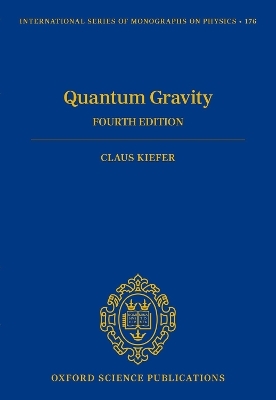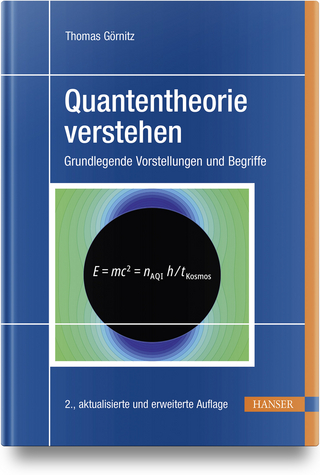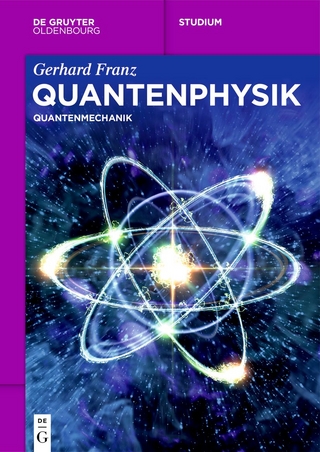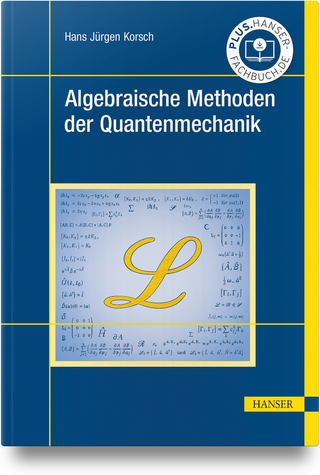
Quantum Gravity
Fourth Edition
Seiten
2025
|
4th Revised edition
Oxford University Press (Verlag)
978-0-19-884213-2 (ISBN)
Oxford University Press (Verlag)
978-0-19-884213-2 (ISBN)
- Noch nicht erschienen (ca. Mai 2025)
- Versandkostenfrei innerhalb Deutschlands
- Auch auf Rechnung
- Verfügbarkeit in der Filiale vor Ort prüfen
- Artikel merken
This book describes in detail the attempts to unify quantum theory and relativity; the new edition includes updated content throughout, as well as further explorations of the holographic principle, unimodular gravity, quantum-gravitational correction terms, and possible observations.
The description of Nature in physics currently falls into two parts: the microscopic and the macroscopic. The microscopic world (molecules, atoms, particles) is described by quantum theory, whereas the macroscopic world (planets, stars, galaxies, universe) is ruled by a classical interaction - gravity - that is described by Einstein's theory of general relativity. This book describes in detail the attempts to unify quantum theory and relativity, which are essential to understanding the origin of the Universe and the final fate of black holes.
The construction of a consistent quantum theory is among the most important open problems in fundamental physics. This book describes the motivation for constructing such a theory and presents the main approaches. These approaches include covariant quantization, canonical quantization (metric and loop approaches), and string theory. The book also covers the main applications, which include black holes and cosmology.
This new edition includes updated content throughout, as well as further explorations of the holographic principle, unimodular gravity, quantum-gravitational correction terms, and possible observations, as these are topics that have experienced important developments since the last edition.
The description of Nature in physics currently falls into two parts: the microscopic and the macroscopic. The microscopic world (molecules, atoms, particles) is described by quantum theory, whereas the macroscopic world (planets, stars, galaxies, universe) is ruled by a classical interaction - gravity - that is described by Einstein's theory of general relativity. This book describes in detail the attempts to unify quantum theory and relativity, which are essential to understanding the origin of the Universe and the final fate of black holes.
The construction of a consistent quantum theory is among the most important open problems in fundamental physics. This book describes the motivation for constructing such a theory and presents the main approaches. These approaches include covariant quantization, canonical quantization (metric and loop approaches), and string theory. The book also covers the main applications, which include black holes and cosmology.
This new edition includes updated content throughout, as well as further explorations of the holographic principle, unimodular gravity, quantum-gravitational correction terms, and possible observations, as these are topics that have experienced important developments since the last edition.
Claus Kiefer has been a Professor at the Institute for Theoretical Physics, University of Cologne, Germany since 2001.
| Erscheint lt. Verlag | 31.5.2025 |
|---|---|
| Reihe/Serie | International Series of Monographs on Physics ; 176 |
| Zusatzinfo | 40 line illustrations |
| Verlagsort | Oxford |
| Sprache | englisch |
| Maße | 171 x 246 mm |
| Themenwelt | Naturwissenschaften ► Physik / Astronomie ► Quantenphysik |
| Naturwissenschaften ► Physik / Astronomie ► Relativitätstheorie | |
| ISBN-10 | 0-19-884213-9 / 0198842139 |
| ISBN-13 | 978-0-19-884213-2 / 9780198842132 |
| Zustand | Neuware |
| Informationen gemäß Produktsicherheitsverordnung (GPSR) | |
| Haben Sie eine Frage zum Produkt? |
Mehr entdecken
aus dem Bereich
aus dem Bereich
Grundlegende Vorstellungen und Begriffe
Buch | Hardcover (2024)
Carl Hanser (Verlag)
44,99 €


